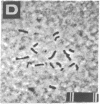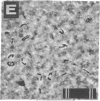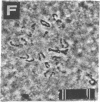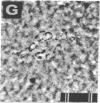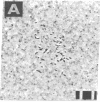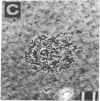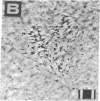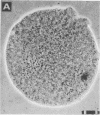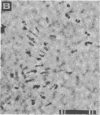Abstract
In unfertilized sea urchin eggs treated with NH4OH-sea water, the chromosomes condense after a first round of DNA synthesis and go through a chromosome cycle. The chromosomes split visibly, but sister chromosomes are not further separated. They regress into an interphase nucleus. These cycles repeat, producing eggs with large numbers of chromosomes. No mitotic apparatus is seen and the eggs do not divide. There is some microscopic evidence of limited chromosome movement, interpreted as centrifugal movement of the condensed chromosomes before they split and a centripetal movement as the split chromosomes decondense to reconstitute the nucleus. The eggs so treated with NH4OH are considered to be unfertilized eggs and can be fertilized later. Such later fertilization permits the introduction of paternal nuclei after the maternal nuclei have progressed some way toward the above-described chromosome condensation. The paternal chromosomes condense prematurely at the time when the maternal chromosomes condense. At the same time, premature with respect to the time of fertilization, mitotic apparatus form.
Keywords: DNA synthesis, chromosome condensation
Full text
PDF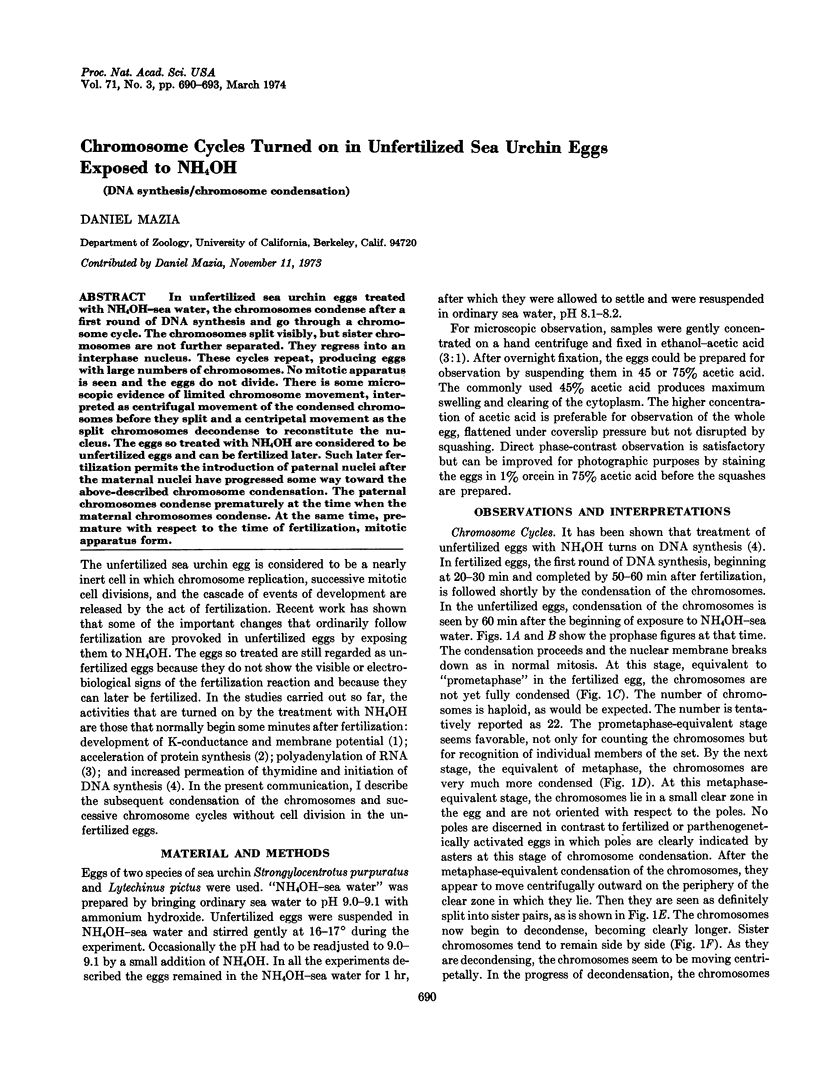
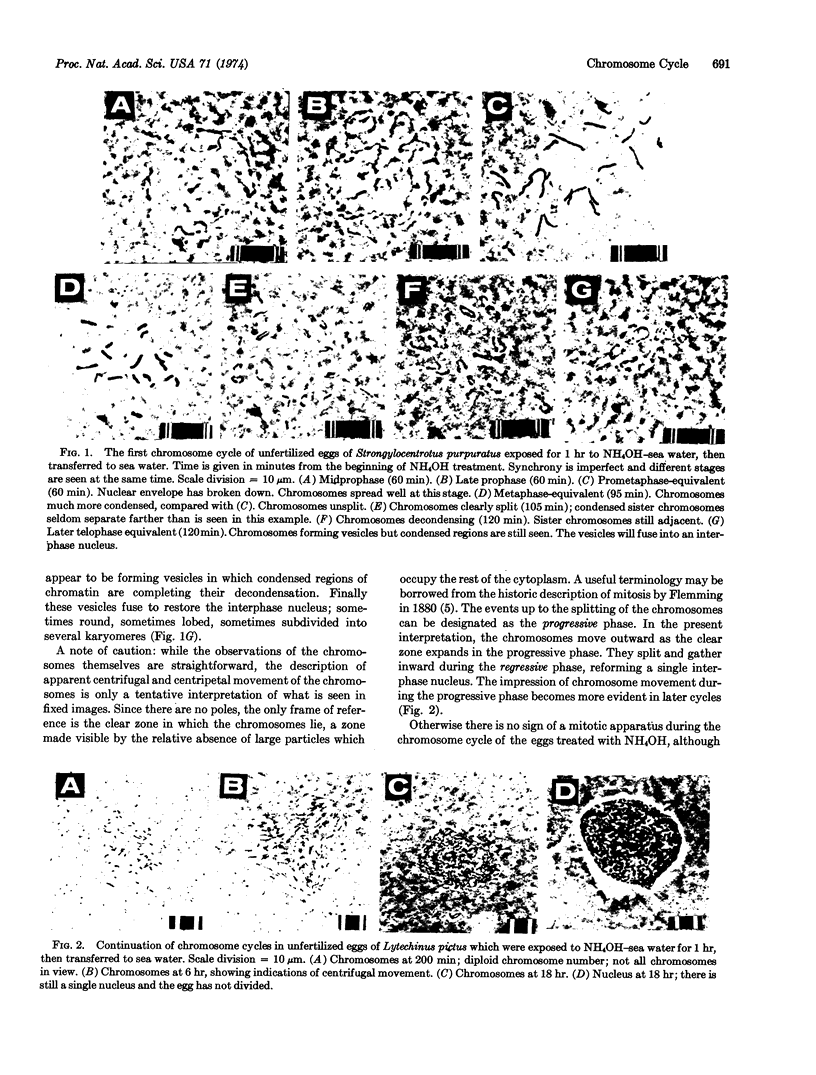
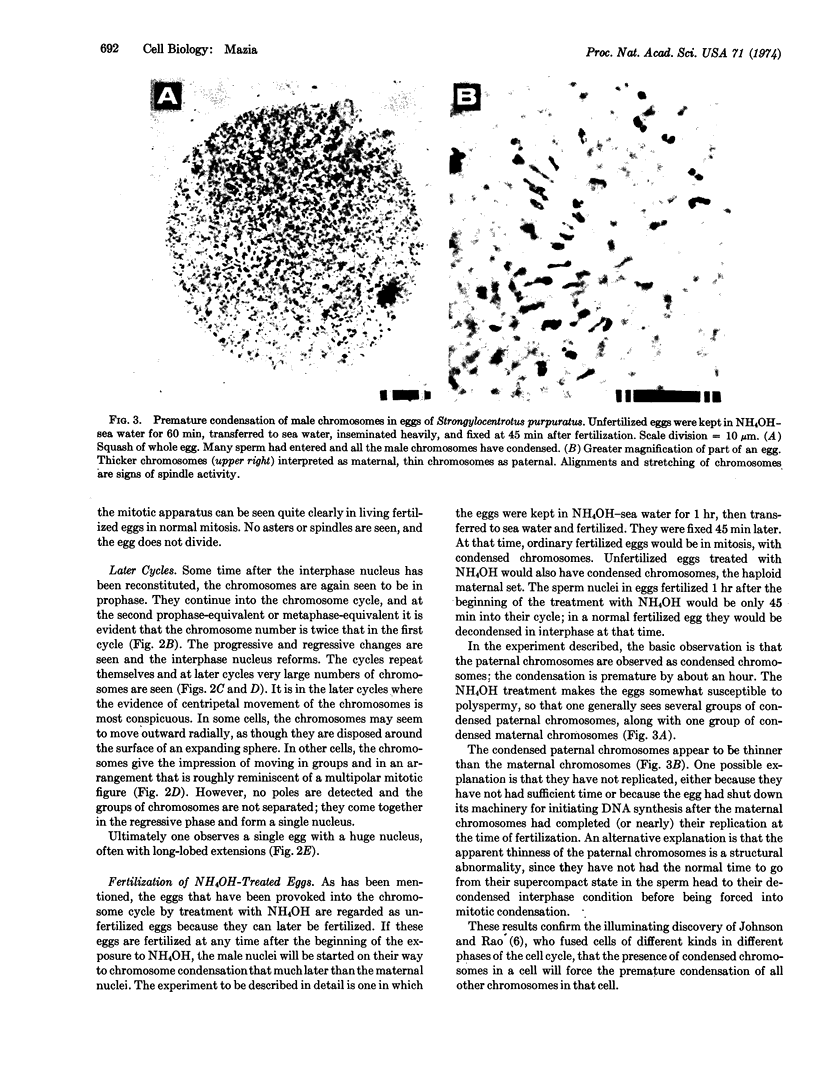
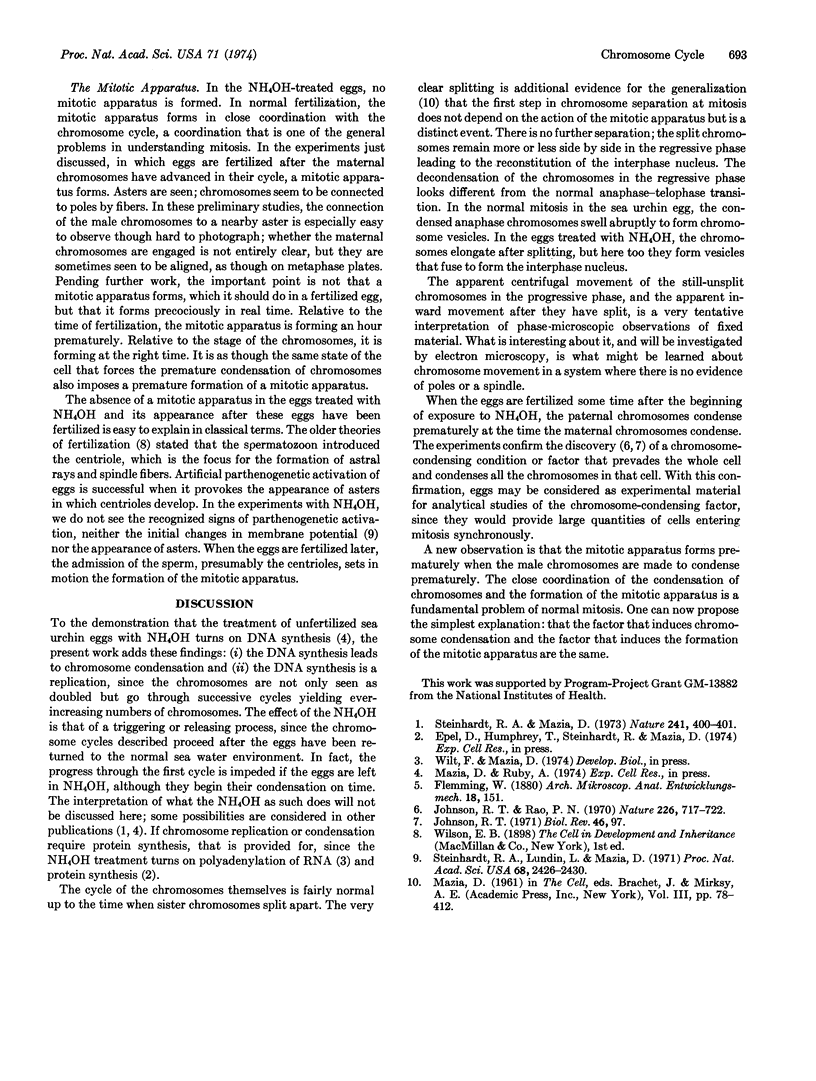
Images in this article
Selected References
These references are in PubMed. This may not be the complete list of references from this article.
- Johnson R. T., Rao P. N. Mammalian cell fusion: induction of premature chromosome condensation in interphase nuclei. Nature. 1970 May 23;226(5247):717–722. doi: 10.1038/226717a0. [DOI] [PubMed] [Google Scholar]
- Johnson R. T., Rao P. N. Nucleo-cytoplasmic interactions in the acheivement of nuclear synchrony in DNA synthesis and mitosis in multinucleate cells. Biol Rev Camb Philos Soc. 1971 Feb;46(1):97–155. doi: 10.1111/j.1469-185x.1971.tb01180.x. [DOI] [PubMed] [Google Scholar]
- Steinhardt R. A., Lundin L., Mazia D. Bioelectric responses of the echinoderm egg to fertilization. Proc Natl Acad Sci U S A. 1971 Oct;68(10):2426–2430. doi: 10.1073/pnas.68.10.2426. [DOI] [PMC free article] [PubMed] [Google Scholar]
- Steinhardt R. A., Mazia D. Development of K + -conductance and membrane potentials in unfertilized sea urchin eggs after exposure to NH 4 OH. Nature. 1973 Feb 9;241(5389):400–401. doi: 10.1038/241400a0. [DOI] [PubMed] [Google Scholar]






